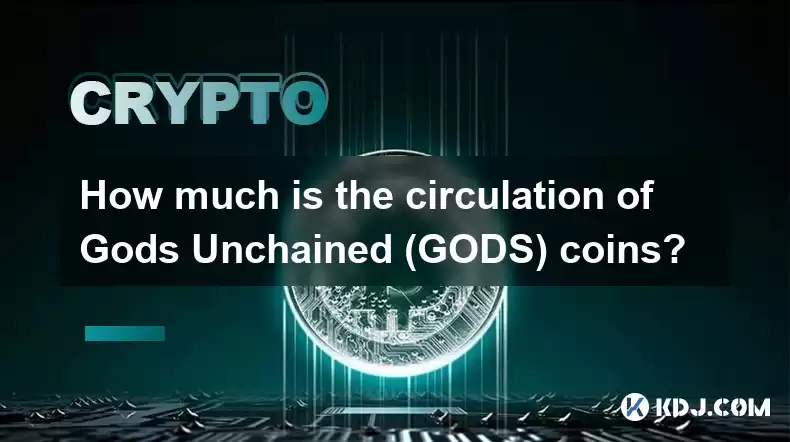-
 Bitcoin
Bitcoin $117800
-3.15% -
 Ethereum
Ethereum $4539
-3.66% -
 XRP
XRP $3.072
-6.08% -
 Tether USDt
Tether USDt $1.000
0.02% -
 BNB
BNB $834.3
-1.03% -
 Solana
Solana $193.1
-2.71% -
 USDC
USDC $0.9997
-0.01% -
 TRON
TRON $0.3583
-0.87% -
 Dogecoin
Dogecoin $0.2233
-8.06% -
 Cardano
Cardano $0.9033
3.60% -
 Chainlink
Chainlink $22.34
-5.78% -
 Hyperliquid
Hyperliquid $44.87
-4.90% -
 Stellar
Stellar $0.4226
-6.29% -
 Sui
Sui $3.765
-5.57% -
 Bitcoin Cash
Bitcoin Cash $588.5
-3.94% -
 Ethena USDe
Ethena USDe $1.001
0.00% -
 Hedera
Hedera $0.2489
-5.54% -
 Avalanche
Avalanche $23.69
-5.77% -
 Litecoin
Litecoin $120.8
-6.90% -
 Toncoin
Toncoin $3.398
-2.63% -
 UNUS SED LEO
UNUS SED LEO $9.276
0.31% -
 Shiba Inu
Shiba Inu $0.00001285
-7.22% -
 Uniswap
Uniswap $10.92
-9.38% -
 Polkadot
Polkadot $3.991
-5.68% -
 OKB
OKB $94.79
-8.25% -
 Dai
Dai $0.9998
0.01% -
 Bitget Token
Bitget Token $4.553
-4.67% -
 Cronos
Cronos $0.1514
-8.71% -
 Ethena
Ethena $0.7243
-7.57% -
 Aave
Aave $310.5
-5.14%
How much is the circulation of Gods Unchained (GODS) coins?
The circulation supply of Gods Unchained (GODS) is influenced by minting, burning, staking, and market demand, which can be tracked through the official website, blockchain explorers, and cryptocurrency market cap aggregators.
Dec 24, 2024 at 03:14 am

Key Points:
- Understanding the Circulation Supply of Gods Unchained (GODS)
- Methods to Track GODS Token Supply
- Factors Influencing the Circulation of GODS
Gods Unchained (GODS) Token Circulation
The circulation supply of a cryptocurrency refers to the quantity of coins or tokens that are currently in circulation among users. This information is crucial for understanding the scarcity, liquidity, and overall market dynamics of the asset.
Gods Unchained (GODS) is a cryptocurrency that powers the Gods Unchained game ecosystem, a free-to-play and play-to-earn digital card game. The GODS token serves various purposes within the game, including in-game purchases, staking for rewards, and governance.
The current circulation supply of GODS is approximately 150 million tokens. This supply is subject to change over time due to ongoing minting and burning activities.
Methods to Track GODS Token Supply
There are several ways to track the circulation supply of GODS tokens:
- Official Website: The official Gods Unchained website provides regularly updated information on the token supply.
- Blockchain Explorers: Exploring the GODS blockchain on platforms like Etherscan or ethers.io allows users to view the total token supply and the number of tokens in circulation.
- Cryptocurrency Market Cap Aggregators: Websites such as CoinMarketCap and CoinGecko aggregate data from various sources to provide users with real-time information on the circulation supply of crypto assets, including GODS.
Factors Influencing the Circulation of GODS
The circulation supply of GODS can be influenced by several factors:
- Minting: GODS tokens can be created or "minted" through the game's protocol. Mining is the process of adding new tokens to the circulating supply.
- Burning: GODS tokens can be "burned," or removed from circulation permanently. This process reduces the circulating supply and potentially increases the token's scarcity.
- Staking: Staking GODS tokens allows users to participate in the network's consensus mechanism. When GODS tokens are staked, they are temporarily removed from circulation.
- Market Demand: The circulation of GODS is also influenced by the overall market demand for the token. High demand for GODS can result in buying pressure, leading to an increase in circulating supply. Conversely, low demand can result in less circulating supply.
FAQs
- What is a token supply cap?
GODS does not have a fixed supply cap. Instead, the token supply is controlled through minting and burning mechanisms designed to maintain a balance between the token's economics and game playability. - How does staking affect circulating supply?
When users stake GODS tokens, they are temporarily removed from circulation. However, they can still be used to earn staking rewards, encouraging participation and potentially influencing supply dynamics. - Why does the circulating supply of GODS fluctuate?
The circulating supply of GODS fluctuates due to ongoing minting, burning, and staking activities. These activities adjust the token's supply according to the game's mechanics and market demand.
Disclaimer:info@kdj.com
The information provided is not trading advice. kdj.com does not assume any responsibility for any investments made based on the information provided in this article. Cryptocurrencies are highly volatile and it is highly recommended that you invest with caution after thorough research!
If you believe that the content used on this website infringes your copyright, please contact us immediately (info@kdj.com) and we will delete it promptly.
- Kazakhstan's Crypto Leap: Bitcoin ETF and Central Asia's Digital Finance Future
- 2025-08-13 12:45:19
- BlockDAG Presale Blazes Past $371M: Fundraising Frenzy Fuels Crypto Sensation
- 2025-08-13 13:05:21
- Meme Coins: Chasing the 2025 Surge – Which Will Moonshot?
- 2025-08-13 10:25:23
- Bitcoin's Wild Ride: Rally, Pullback, and What's Next
- 2025-08-13 10:25:23
- Bitcoin, Bitmax, and Institutional Demand: A New Era of Crypto Investment
- 2025-08-13 10:45:12
- Solana, ROAM, and Airdrops: What's the Buzz in 2025?
- 2025-08-13 11:35:13
Related knowledge

How to purchase Aragon (ANT)?
Aug 09,2025 at 11:56pm
Understanding Aragon (ANT) and Its PurposeAragon (ANT) is a decentralized governance token that powers the Aragon Network, a platform built on the Eth...

Where to trade Band Protocol (BAND)?
Aug 10,2025 at 11:36pm
Understanding the Role of Private Keys in Cryptocurrency WalletsIn the world of cryptocurrency, a private key is one of the most critical components o...

What is the most secure way to buy Ocean Protocol (OCEAN)?
Aug 10,2025 at 01:01pm
Understanding Ocean Protocol (OCEAN) and Its EcosystemOcean Protocol (OCEAN) is a decentralized data exchange platform built on blockchain technology,...

How to invest in Kyber Network Crystal v2 (KNC)?
Aug 12,2025 at 05:21pm
Understanding Kyber Network Crystal v2 (KNC)Kyber Network is a decentralized liquidity hub built on the Ethereum blockchain that enables instant token...

Where can I buy UMA (UMA)?
Aug 07,2025 at 06:42pm
Understanding UMA and Its Role in Decentralized FinanceUMA (Universal Market Access) is an Ethereum-based decentralized finance (DeFi) protocol design...

How to sell my Ren (REN) tokens?
Aug 13,2025 at 11:35am
Understanding REN Tokens and Their Role in Decentralized FinanceREN is an ERC-20 token that powers the Ren protocol, a decentralized interoperability ...

How to purchase Aragon (ANT)?
Aug 09,2025 at 11:56pm
Understanding Aragon (ANT) and Its PurposeAragon (ANT) is a decentralized governance token that powers the Aragon Network, a platform built on the Eth...

Where to trade Band Protocol (BAND)?
Aug 10,2025 at 11:36pm
Understanding the Role of Private Keys in Cryptocurrency WalletsIn the world of cryptocurrency, a private key is one of the most critical components o...

What is the most secure way to buy Ocean Protocol (OCEAN)?
Aug 10,2025 at 01:01pm
Understanding Ocean Protocol (OCEAN) and Its EcosystemOcean Protocol (OCEAN) is a decentralized data exchange platform built on blockchain technology,...

How to invest in Kyber Network Crystal v2 (KNC)?
Aug 12,2025 at 05:21pm
Understanding Kyber Network Crystal v2 (KNC)Kyber Network is a decentralized liquidity hub built on the Ethereum blockchain that enables instant token...

Where can I buy UMA (UMA)?
Aug 07,2025 at 06:42pm
Understanding UMA and Its Role in Decentralized FinanceUMA (Universal Market Access) is an Ethereum-based decentralized finance (DeFi) protocol design...

How to sell my Ren (REN) tokens?
Aug 13,2025 at 11:35am
Understanding REN Tokens and Their Role in Decentralized FinanceREN is an ERC-20 token that powers the Ren protocol, a decentralized interoperability ...
See all articles

























































































